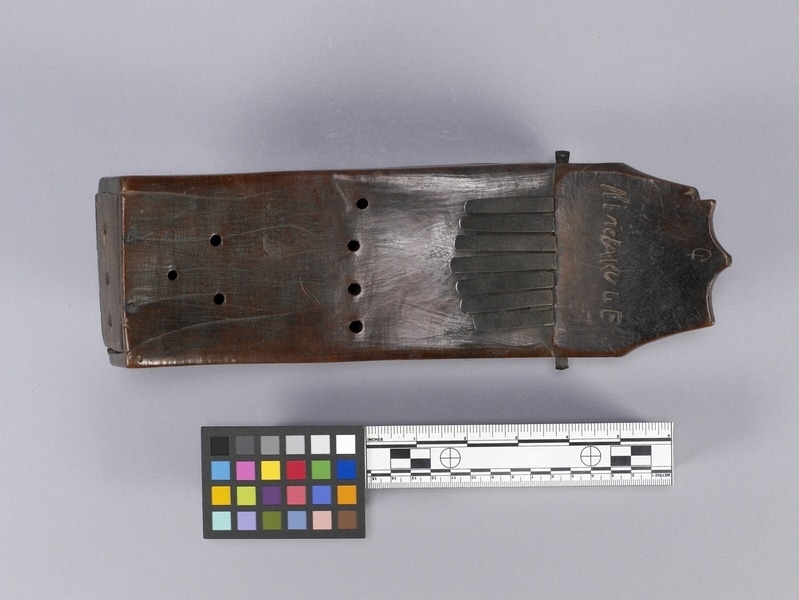Thumb Piano Item Number: K4.52 from the MOA: University of British Columbia


Description
Instrument with seven metal prongs attached at an angle on a concavely curved wooden closed sound box; carved with "Nindakule". A slightly curving row of four holes near the middle and three more holes in a triangular formation at the end opposite the metal tongues (keys). A row of three holes at the end near the triangular formation with three curved points at the other end near the metal prongs. On the wood, there is a metal loop at either sides of the metal prongs.
History Of Use
The mbira (Shona language) is a plucked idiophone (or lamellaphone) that has been in use for thousands of years, and is played widely throughout the African continent. It is known by many different names, e.g., sanza, kalimba, kilembe, likembe, kadono, akogo, timbrh, and thumb piano, and has undergone regional variations, but the general style and function remain consistent. The instrument has been played for both secular and ceremonial use, e.g., around the fire during social evenings, or to commicate with the ancestors.
Item History
- Made in Tanzania
- Collected between 1916 and 1918
- Owned by A. McPhee Warner
- Owned by Lillian Warner before August 1954
- Received from Lillian Warner (Donor) during August 1954
What
- Name
- Thumb Piano
- Identification Number
- K4.52
- Type of Item
- thumb piano
- Material
- iron metal and wood
- Manufacturing Technique
- carved and nailed
- Overall
- height 8.0 cm, width 11.0 cm, depth 31.0 cm
Who
- Culture
- East African
- Previous Owner
- A. McPhee Warner and Lillian Warner
- Received from
- Lillian Warner (Donor)
Where
- Holding Institution
- MOA: University of British Columbia
- Made in
- Tanzania
When
- Collection Date
- between 1916 and 1918
- Ownership Date
- before August 1954
- Acquisition Date
- during August 1954
Other
- Item Classes
- metalwork
- Condition
- fair
- Accession Number
- 2177/0003